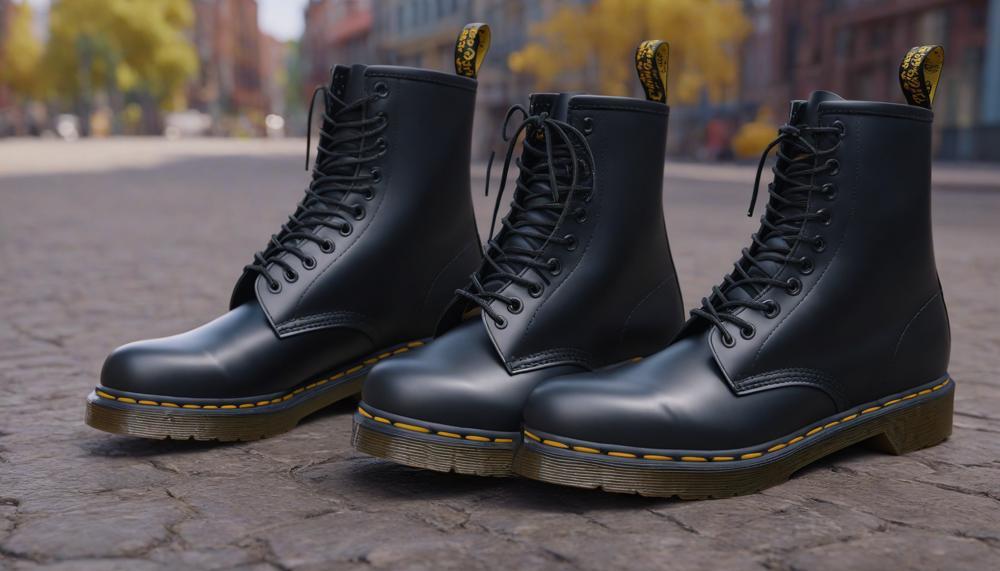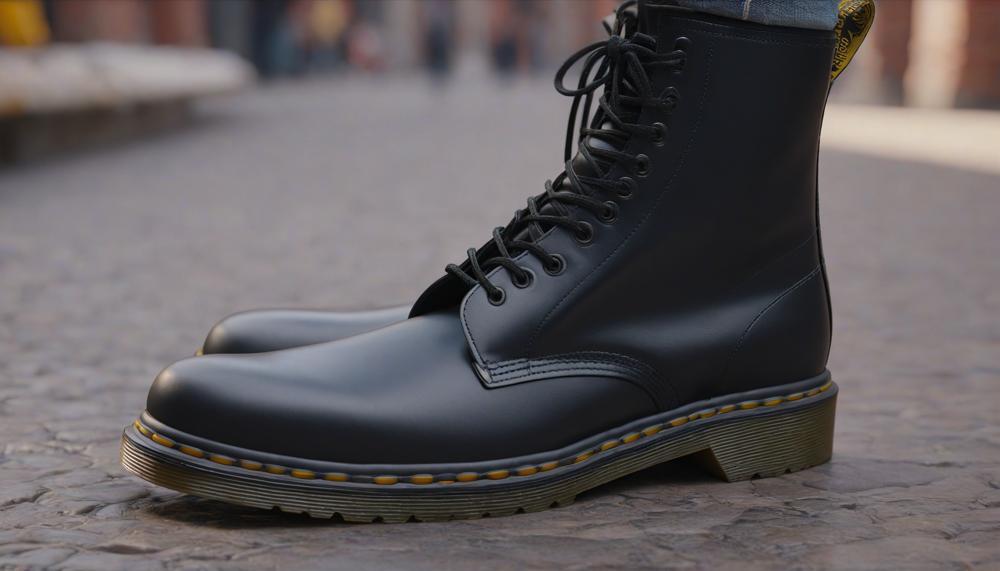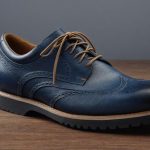Are you on the hunt for shoes that channel the iconic style of Doc Martens but won’t stretch your wallet? The answer is a resounding yes—there are plenty of affordable, stylish alternatives that echo the robust charm of the classic Doc Martens.
Why consider alternatives to Doc Martens? The allure of Doc Martens comes from their distinctive design and durable construction, but their price tag can be a bit steep. For those who love the look but desire more budget-friendly options or unique styles, exploring alternatives can be a rewarding venture.
Main Takeaways:
- Variety of Styles: From sleek Mary Janes to rugged Chelsea boots, and even trendy slip-ons, there’s a wide array of styles available that mimic the Doc Martens aesthetic.
- Cost-Effective: Many of these alternatives come at a fraction of the cost, making them accessible to more fashion enthusiasts.
- Unique Designs: Opting for less recognized brands can not only save money but also give your style a unique twist with options like croc-patterned or tall boots.
Embark on a journey through the exciting world of footwear where style meets affordability. Whether you’re looking to complement a specific outfit or simply want to expand your shoe collection, the possibilities are vast and vibrant.
Let’s dive deeper into what makes these alternatives worthy contenders in the realm of fashionable footwear.
Solovair
Contents
Solovair is a distinguished British footwear brand renowned for its robust, handcrafted shoes and boots. Established in the late 19th century, the company has a storied history in shoe manufacturing, originally producing for other brands, including a period when they made boots for Dr. Martens.
How are Solovair shoes similar to Doc Martens?
Solovair shoes share several key characteristics with Doc Martens, making them comparable in style and function. Below is a detailed comparison:
| Feature | Solovair | Doc Martens |
| Construction | Handcrafted in England | Primarily manufactured overseas |
| Leather Quality | Robust corrected grain leather | Corrected grain leather |
| Design | Chunky soles, glossy finish, slightly stubbier toe | Similar chunky soles, glossy finish, more streamlined toe |
| Price | Around $219 | Around $170 |
| Distinct Features | Triple stitching, less noticeable stitching, steel-toe options | Triple stitching, more pronounced stitching, steel-toe options |
Grinders
Several footwear brands craft shoes akin to Doc Martens, notable for their robust construction and fashion-forward designs. Two prominent alternatives are Solovair and Timberland. Each brings a unique twist on style and durability that competes with Doc Martens.
Solovair, a historic British label, initially manufactured shoes under license for Dr. Martens. Today, they continue to create footwear with a very similar aesthetic and quality. Solovair boots are renowned for their Goodyear welt, a hallmark of durability, and often use the same leather suppliers as Doc Martens. The primary difference lies in the sole; Solovair uses a softer suspension sole compared to Doc Martens’ harder-wearing one.
Timberland, on the other hand, is best known for its rugged, outdoor-ready boots that blend style with performance. While not as street style-oriented as Doc Martens, Timberlands offer superior waterproofing and insulation, making them ideal for adverse weather conditions.
The table below provides a quick comparison of these brands based on key attributes such as style, durability, and comfort:
| Brand | Style | Durability | Comfort |
| Doc Martens | Iconic, punk-inspired | High (Goodyear welt) | Good after break-in |
| Solovair | Similar to Doc Martens, slightly refined | High (Goodyear welt) | Very comfortable (softer sole) |
| Timberland | Rugged, outdoor-focused | Very high (robust materials) | Excellent (insulated, supportive) |
For enthusiasts seeking alternatives to Doc Martens, Solovair offers the closest style match with arguably better comfort due to their softer soles. Timberland provides a more utilitarian and rugged alternative, excelling in environments where weather resistance and durability are paramount.
Fluevog
Yes, Fluevog shoes can indeed be considered alternatives to Doc Martens, particularly for those seeking a unique style within the realm of fashion footwear. Here’s why:
Fluevog shoes distinguish themselves through a varied palette of colors and an assortment of heel heights, catering to a fashion-forward audience. While Doc Martens is traditionally associated with its iconic, durable leather boots, Fluevog introduces a more diverse range in terms of design and aesthetic appeal, which could attract customers looking for shoes that stand out in a crowd.
However, it’s important to note that Fluevog’s price point is generally higher than that of Doc Martens, reflecting its position in the market as a more upscale brand. This aspect might influence the decision-making of some shoppers, particularly those who prioritize cost over style uniqueness.
Below is a comparative table that outlines the key differences and similarities between Fluevog and Doc Martens, providing a clearer picture for potential buyers:
| Feature | Fluevog | Doc Martens |
| Style Variety | Wide range of colors and heel heights | Primarily known for its iconic leather boots |
| Price | Generally more expensive | More affordable |
| Target Market | Fashion footwear, higher-end market | Durable, broadly appealing |
For individuals who cherish a distinct fashion statement, Fluevog offers a refreshing alternative to the rugged, utilitarian vibe of Doc Martens. Both brands hold significant appeal, but they cater to slightly different tastes and budgets.
Blundstone
Blundstone boots, originating from Tasmania, are crafted for comfort and durability. Unlike their counterpart, Dr. Martens, Blundstones are designed to be worn straight from the box without the need for a break-in period. This key feature makes them a favorite for those who value immediate comfort.
In contrast, Dr. Martens are famed for their sturdy construction but often require a significant break-in period, during which they can be quite uncomfortable. This need for break-in can deter those looking for ready-to-wear ease. Additionally, Dr. Martens can be personalized and repaired using simple tools like a lighter and a toothpick to create a custom distressed look, offering a level of customization that Blundstones, which are not repairable, do not provide.
Both brands offer unisex designs, though Blundstone also presents a stylish heeled option catering specifically to women. When it comes to sizing, both brands generally run slightly larger for men.
Here’s a comparative table outlining some key differences:
| Feature | Blundstone | Doc Martens |
| Ready to Wear | Yes, no break-in required | No, requires break-in |
| Repairability | Not repairable | Repairable with DIY tools |
| Options for Women | Heeled versions available | Standard unisex models |
Grenson
Grenson shoes, renowned for their exceptional craftsmanship and high-quality materials, stand as a paragon of traditional shoemaking. Crafted in Northamptonshire, England—a region famous for its shoemaking heritage—each pair of Grenson shoes is made from scratch in their own factories, ensuring meticulous attention to detail and durability.
This bespoke approach contrasts with many modern manufacturers, including Doc Martens, which often mass-produce their footwear.
The comparison between Grenson and Doc Martens reveals distinct differences in style, manufacturing, and target audience. Grenson shoes, often seen as an investment in footwear, offer a refined and classic aesthetic suitable for formal and business environments. On the other hand, Doc Martens appeals to a broader audience, promoting a more rugged, casual style that aligns with street fashion and counterculture movements.
Here’s a detailed breakdown in tabular form to compare these two iconic brands:
| Feature | Grenson | Doc Martens |
| Origin | Northamptonshire, England | Originally from England, now globally produced |
| Style | Elegant, formal | Casual, iconic |
| Manufacturing | Handcrafted, factory-owned production | Mass-produced, various locations |
| Price | Higher, reflecting bespoke quality | Varies, generally more affordable |
| Durability | Highly durable, designed for longevity | Durable with a rugged appeal |
| Target Audience | Luxury consumers, formal wearers | Wide range, including youth and subcultures |
While Grenson shoes might seem pricier, their value is justified by the quality and longevity they offer. For those appreciating heritage and the art of traditional shoemaking, Grenson is a commendable choice. Conversely, Doc Martens offers versatility and a signature style that resonates with a diverse audience, making them a staple in many wardrobes for different reasons.
Red Wing Shoes
Red Wing Shoes and Doc Martens cater to distinctly different footwear needs despite their shared legacy in sturdy shoe construction. When choosing between the two, customers should consider these variances:
- Leather Quality: Red Wing Shoes feature superior full-grain leather that ages beautifully and ensures prolonged durability, making them a solid choice for intense outdoor or work activities. Conversely, Doc Martens’ use of corrected grain leather with a glossy finish suits those preferring a shiny, fashion-forward appearance.
- Manufacturing Process: Red Wing’s handcrafted approach reflects a commitment to quality and individuality in each pair, ideal for enthusiasts of traditional craftsmanship. Doc Martens, manufactured on a larger scale, offer consistency and accessibility in price and style.
- Fitting and Comfort: The fit of Red Wing Shoes is initially tighter, designed to adapt to the foot’s shape over time, suggesting a break-in period that leads to custom-like comfort. Doc Martens’ softer, air-cushioned soles provide immediate comfort, beneficial for everyday, casual wear.
- Sizing Options: With more precise sizing, Red Wing Shoes can better accommodate a wider range of foot shapes, essential for those requiring specific fits for comfort or work conditions.
- Style and Aesthetic: Red Wing Shoes maintains a focus on classic, functional designs primarily in neutral colours, aligning with traditional work attire. Doc Martens offers a broader palette of styles and colours, catering to a younger or more style-conscious demographic.
Altberg
Yes, Altberg boots can be considered a good alternative to Doc Martens shoes. Altberg, with its robust craftsmanship and attention to detail in the construction of hiking and military footwear, offers distinctive features that make them suitable for those seeking durability and comfort similar to that provided by Doc Martens. Here’s a detailed comparison to illustrate their strengths:
| Feature | Altberg | Doc Martens |
| Material Quality | High-quality leather, often with enhanced waterproofing capabilities | Durable leather, iconic for its smooth or patent finish |
| Comfort | Designed for long wear and rugged use, often preferred by outdoor enthusiasts | Famous for air-cushioned soles, offering good daily comfort |
| Style | More utilitarian and classic, focused on functionality | Street style iconic, with a wide range of designs from classic to avant-garde |
| Durability | Constructed for durability in harsh environments, like hiking trails or military use | Long-lasting, with a reputation for enduring rough conditions |

Altberg boots shine in their rugged durability and practicality, making them an excellent choice for those requiring footwear that stands up to challenging environments.
While Doc Martens offers a blend of style and comfort that appeals broadly to fashion enthusiasts and casual wearers alike, Altberg focuses on performance and resilience, which may attract a different, though somewhat overlapping, demographic. Their craftsmanship ensures a boot not only built to last but also tailored for intense use, distinguishing them within the niche of high-performance footwear.
Timberland
A commendable brand similar to Doc Martens in style, durability, and comfort is Timberland. Timberland boots are renowned for their robust construction and stylish yet practical design, much like Doc Martens.
Both brands share a commitment to craftsmanship and offer features like water resistance and support for the feet, making them suitable for both everyday wear and rougher outdoor activities.
Here is a comparative overview of Timberland and Doc Martens:
| Feature | Doc Martens | Timberland |
| Style | Iconic, with a punk-rock aesthetic | Rugged, outdoor-inspired design |
| Durability | Highly durable with Goodyear welt | Robust construction, designed for longevity |
| Comfort | Air-cushioned soles | Shock absorption and cushioned insoles |
| Material | Leather, often with a polished finish | Premium full-grain and nubuck leathers |
| Water Resistance | Varying levels depending on the model | Highly water-resistant, especially the ‘Waterproof’ lines |
| Price Range | Mid to high | Mid to high, comparable to Doc Martens |
Timberland boots are particularly suitable for those who value sturdy footwear capable of handling diverse environments, much like the versatility offered by Doc Martens.
Their aesthetic appeal combined with practical functionality makes them a robust choice for anyone looking to mirror the classic appeal of Docs with a touch of outdoor ruggedness.
Danner
Danner boots, recognized for their rugged durability and high-performance design, cater primarily to those who need footwear that can withstand the rigors of outdoor activities, such as hiking or tactical operations. Unlike Doc Martens, which have carved a niche in fashion-forward circles with their iconic styles and comfort, Danner focuses more on functionality and robustness, making them ideal for different scenarios.
Here’s a comparison to guide potential switchers or those considering adding a pair of Danner boots to their collection:
| Feature | Doc Martens | Danner |
| Style | Fashion-forward, iconic | Functional, utilitarian |
| Comfort | High comfort for urban wear | Engineered for rugged use |
| Material Quality | Leather, durable | High-grade materials, USA-made options |
| Use Case | Casual, daily wear | Outdoor, tactical, and tough environments |
Both brands are praised for their comfort, but the intended use and style differ significantly. If your priority is fashion and urban wear, Doc Martens might be preferable.
However, for those needing boots that can handle harsh conditions and demanding activities, Danner is an excellent choice.
Their range of options includes boots made in the USA, emphasizing quality and craftsmanship.
Conclusion
Exploring alternatives to Doc Martens unveils a vibrant landscape of footwear that blends style, affordability, and unique design elements. Brands like Solovair and Timberland echo the durable, iconic aesthetic of Doc Martens while introducing nuances that cater to specific preferences and needs. Solovair, with its historical ties to Doc Martens, offers shoes that rival the original in quality and design but with a softer sole for enhanced comfort. Meanwhile, Timberland shifts the focus towards rugged, outdoor functionality, perfect for those requiring robust weather resistance.
On the fashion-forward front, Fluevog provides a kaleidoscope of colors and styles, appealing to those seeking standout pieces. And for those prioritizing immediate wearability and comfort, Blundstone emerges as a top choice with its no-break-in-required boots.
Each brand presents a unique narrative in the footwear domain, challenging the one-size-fits-all approach and offering consumers a rich array of choices. Whether one seeks a direct stylistic parallel to Doc Martens or a distinct twist on a classic theme, the options are as diverse as the individuals wearing them.






